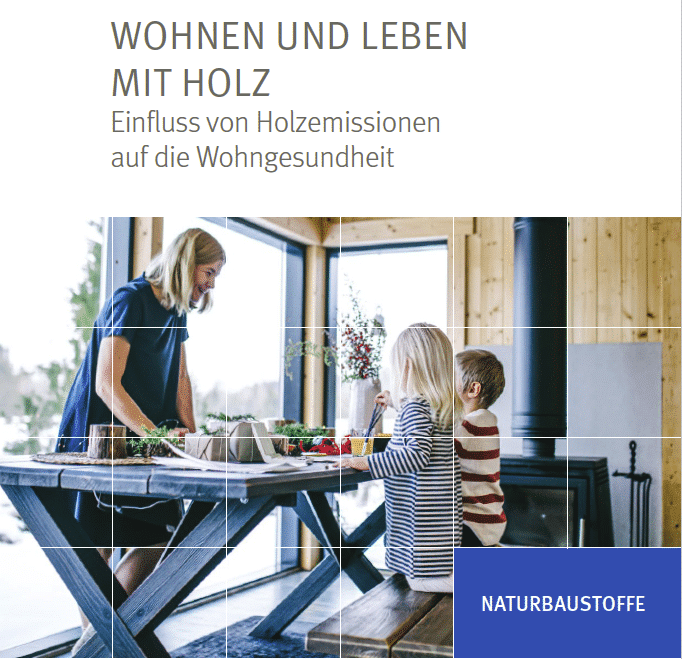Leidorf
news
Wood reserves in Austria!
In accordance with the principle of sustainability, less wood is removed from the forest in Austria than grows back. According to the growth of the last ten years in the productive forest 89 per cent were harvested, while 11 per cent remained in the forest.
This strategy contributes to a continuous increase in timber reserves.
Since the 1960s, this has risen by around 50 per cent and currently stands at 1,173 million Metres in stock. Of course, this development can be seen throughout European forests. As a result of active forest management, Central Europe's timber reserves have been reduced by 8 billion Stock cubic metres This is 7 times the wood reserves in Austria.
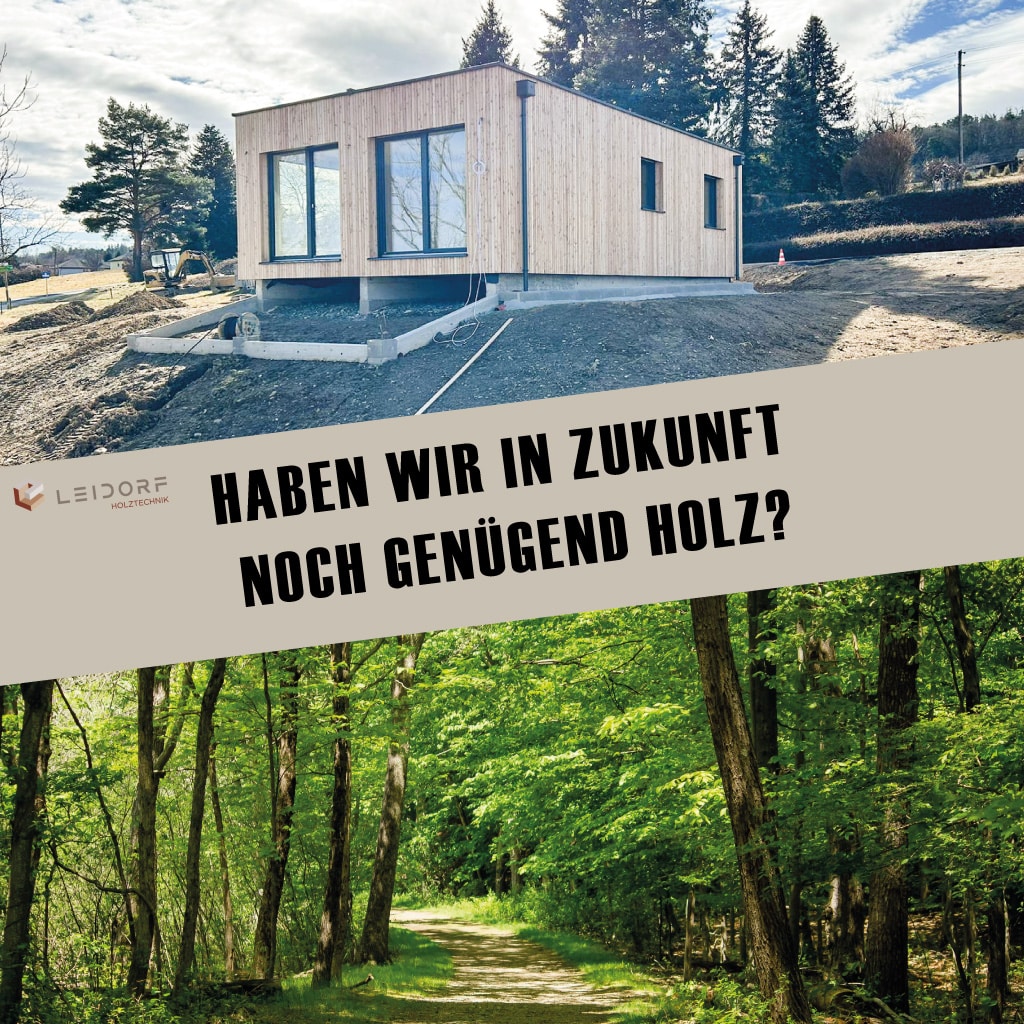
Wood in the future?
The future of wood in Austria is secure! In the study "Timber availability in Austria" The sustainable utilisation potential of the Austrian forest for the next ten years was examined in a study. The result is promising: wood will continue to be abundant in the future. However, flexible management adapted to future climatic conditions is crucial. On the one hand, this means thinning old-growth stands and, at the same time, implementing regeneration measures.
It is also important to consider wood in the context of a sustainable life cycle. We focus on innovative, durable wood products and the efficient use of this valuable raw material. The future definitely belongs to sustainable building materials!
Source:
proHolz Austria
A Tiny House please
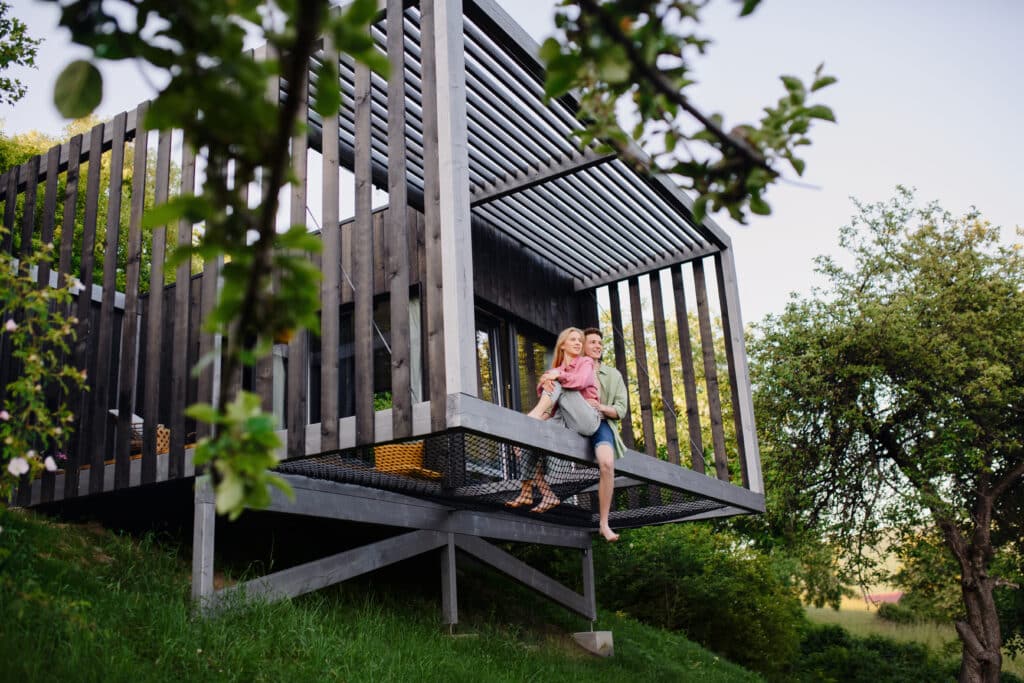
Why more and more small houses are being built
There are several reasons why the demand for Tiny Houses has increased in recent years. Here are some possible explanations:
Cost: Tiny houses are often less expensive than conventional properties. They require fewer materials and less energy to build and operate. This makes them attractive to people looking for a low-cost housing solution, especially in areas with high property prices.
Prefabrication: Due to a high degree of prefabrication, Tiny Houses can be manufactured in the factory regardless of the weather. The fully equipped module is transported to the building site. Assembly can thus take place in the shortest possible time.
Sustainability: Tiny houses are usually more energy efficient and have a smaller ecological footprint than larger houses. They require fewer resources to build and operate and can often be powered by renewable energy. This attracts environmentally conscious people looking for a sustainable housing option.
Minimalism: Tiny houses promote a minimalist lifestyle, where one concentrates on the essentials and frees oneself from unnecessary possessions. Many people see this as a way to free themselves from material ballast and live a simpler, more focused life.
Flexibility and mobility: Tiny houses offer the possibility to be flexible and live in different places. As they are compact and often built on wheels, they can be easily transported. This is attractive for people who like to travel or live in different locations without having to commit to a specific region.
Housing shortage: In some regions there is a shortage of affordable housing. Tiny houses can offer an alternative by creating living space in limited areas. This is particularly relevant in urban areas where housing is scarce.
We deliver your Tiny House | Modular House | Mobile Home
NEW: Leidorf Logistics founded
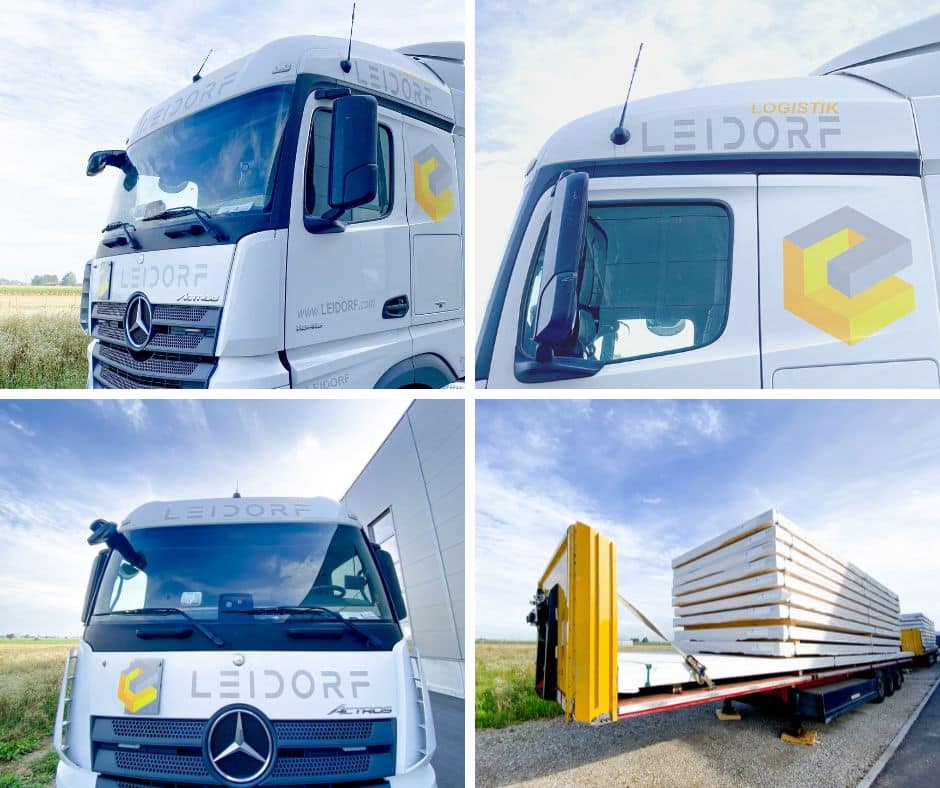
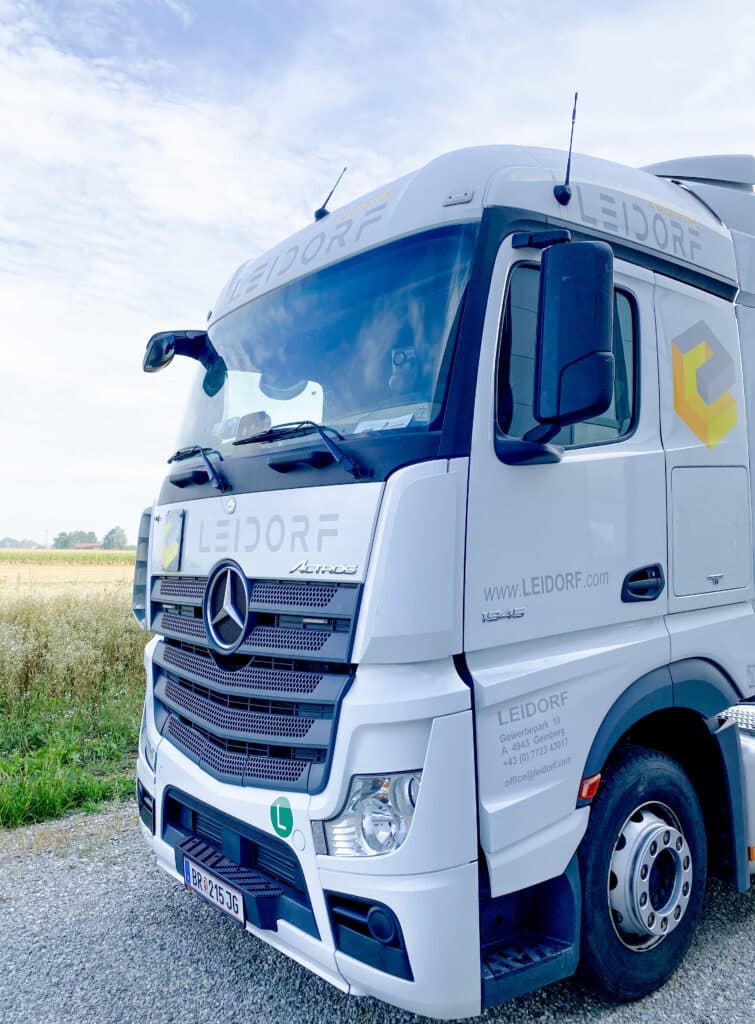
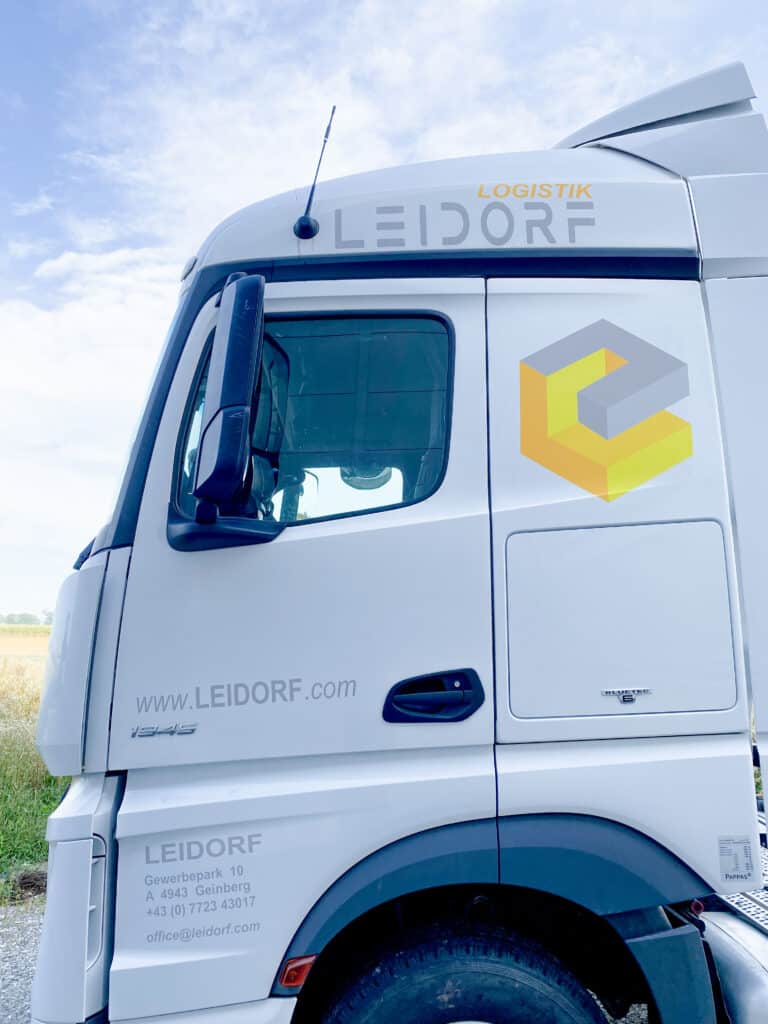
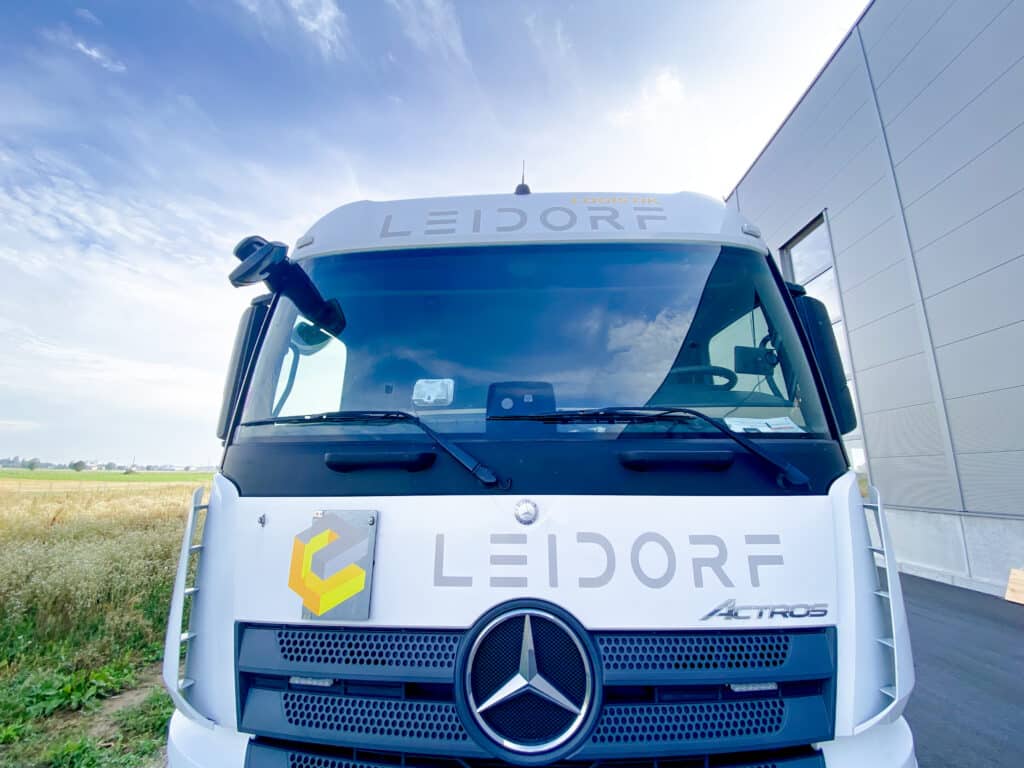
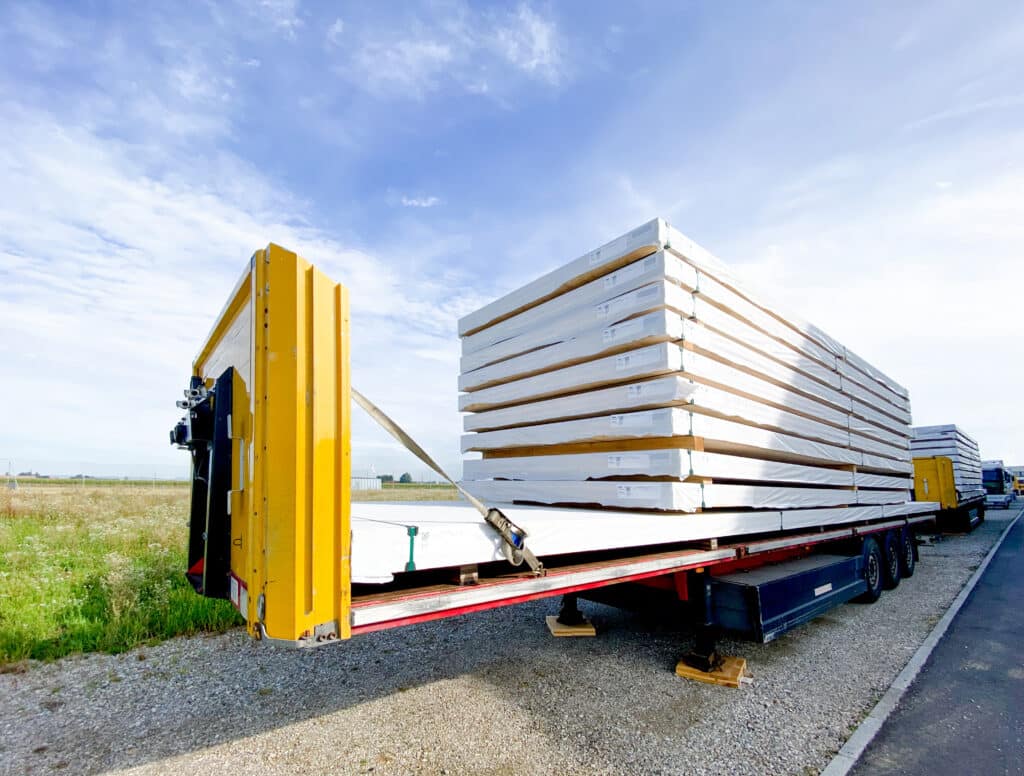
We 💚💚💚 XXL Logistics
With our truck 
In order to make the transports even more sustainable and economical, we also offer our transports as a service.
We also transport CLT and other large-format wooden components for your projects. Always in XXL format, of course: excess width or length is no problem. In Austria we have a permanent permit up to 3.50 m wide and 20.5 m long on all our vehicles.
For Germany, Switzerland, Belgium, Luxembourg and the Netherlands we have a permanent permit up to 3.0 m wide.
4 tractors - 20 trailers
Our fleet consists of 3 tractors and 20 open trailers.
Permanent permit for excess width up to 3.5 m in Austria and 3.0 m in Germany, Switzerland, Belgium, Luxembourg and the Netherlands.
Our speciality is flexible construction site logistics. For orders with several deliveries, we park the trailer at the construction site. We then drive back empty for the first delivery. The fitters can move the material at their leisure. For the last delivery, we then take a trailer "piggyback" and save a journey.
Life cycle assessment: Wood performs better than before
In Switzerland, an updated version of the so-called KBOB list, which maps environmental impact points, primary energy and greenhouse gas emissions, was published at the end of April. Wood products now score significantly better than before. This could be exemplary for Austria.

Change Carbon reservoirs
Glulam rated better
What is also new is that glued wood products now perform better with regard to greenhouse indicators. For glulam, for example, there has been a serious change. "Here it has been shown that the expenses in production are significantly lower than previously assumed," explains Dr. Rolf Frischknecht, who heads the company specialising in life cycle assessment consulting and research. treeze conducts. The situation is completely different for conventional building materials. Concrete, for example, is now rated worse on all three points - environmental impact, greenhouse gas emissions and primary energy.
For those interested in the details, Ecobau has summarised the most important changes via an online information event. The explanations by Frischknecht can be found here. here.
Source: www.holzbauaustria.at, Ecobau, Lignum
Building law
Does the construction of a carport require a building permit or notification in Upper Austria?
Text according to the province of Upper Austria (21.06.2022):
https://www.land-oberoesterreich.gv.at/29743.htm
After the Oö. Building regulations are sufficient for a Carport up to 50 m² Built-up area before construction a building notification (§ 25 Abs. 1 Z. 9 Oö. Bauordnung 1994); for larger carports a building permit would be required. The prerequisite is that a carport (= protective roof) is actually present. If the structure is "predominantly enclosed" and thus can already be assumed to be a building, a building permit would only be required up to a built-up area of 35 m2. m² a notification obligation exists and, in addition, a permit is required (cf. the definitions of shelter and building in § 2 line 12 and line 23). Oö. Building Technology Act 2013).
Non-residential ground-floor, single-storey and detached buildings resp. Protective roofs, each with a built-up area of up to 15 m2in so far as they are located in building land according to the zoning plan and in accordance with the building regulations applicable to them. resp. The following provisions of spatial planning law, in particular those of the zoning law resp. The building authorities do not require prior notification of construction or approval for construction work carried out in accordance with the development plan. However, in order to clarify whether all requirements are met, we recommend contacting the building authority in advance!
Additional information Leidorf:
The definition of a shelter is as follows:
Shelter roof: a roofed, accessible structure not enclosed on all sides, which serves primarily to protect against the effects of the weather, such as open stand structures, flying roofs, pavilions and the like, insofar as it is not a building.
Information on this: 2 sides must be open so that it is a shelter and not a building.
Further information
The trade fair for robotics in the wood industry
TimberBot Event on 13.05.2022
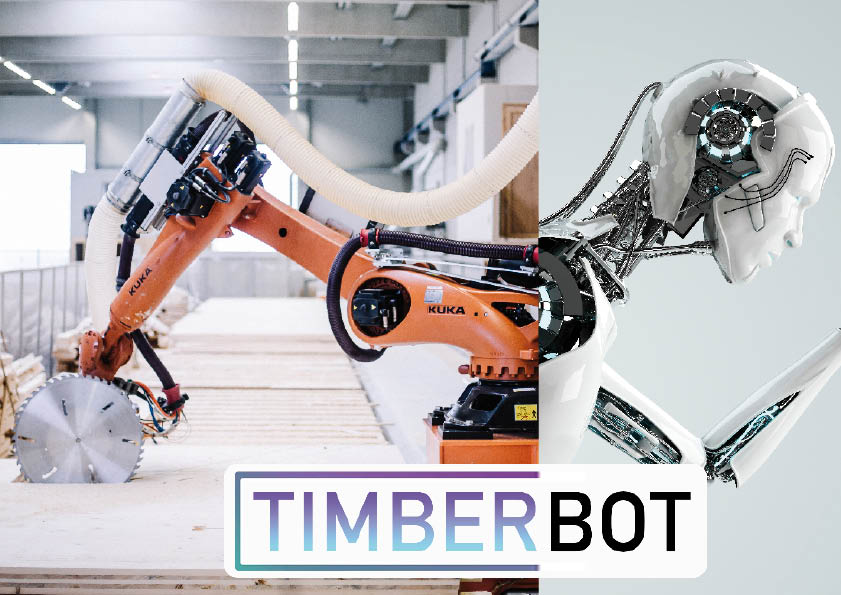

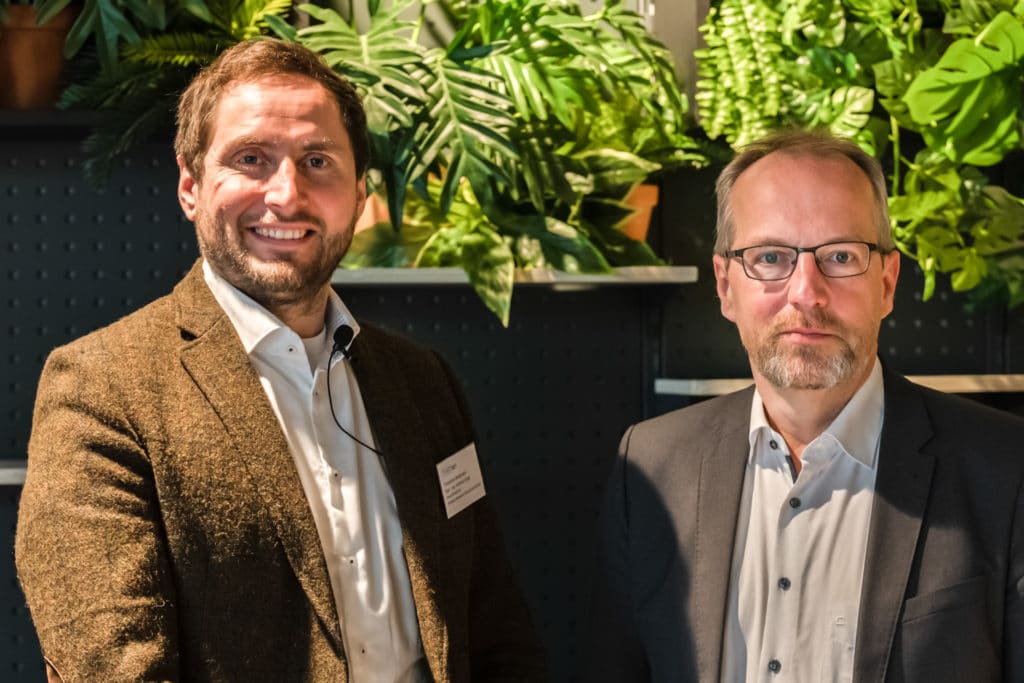
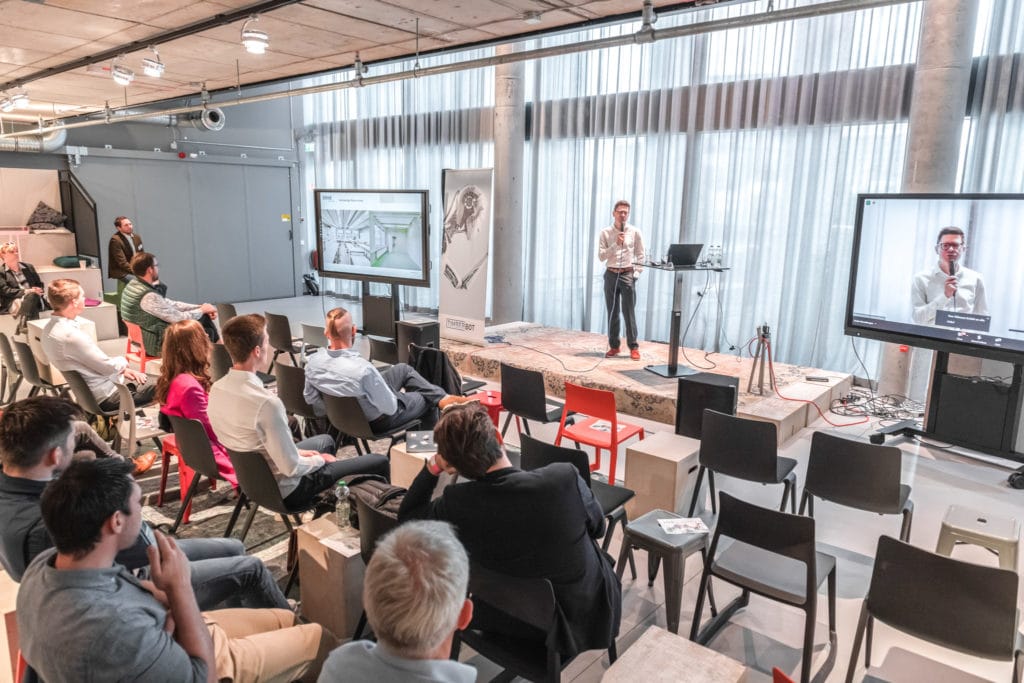
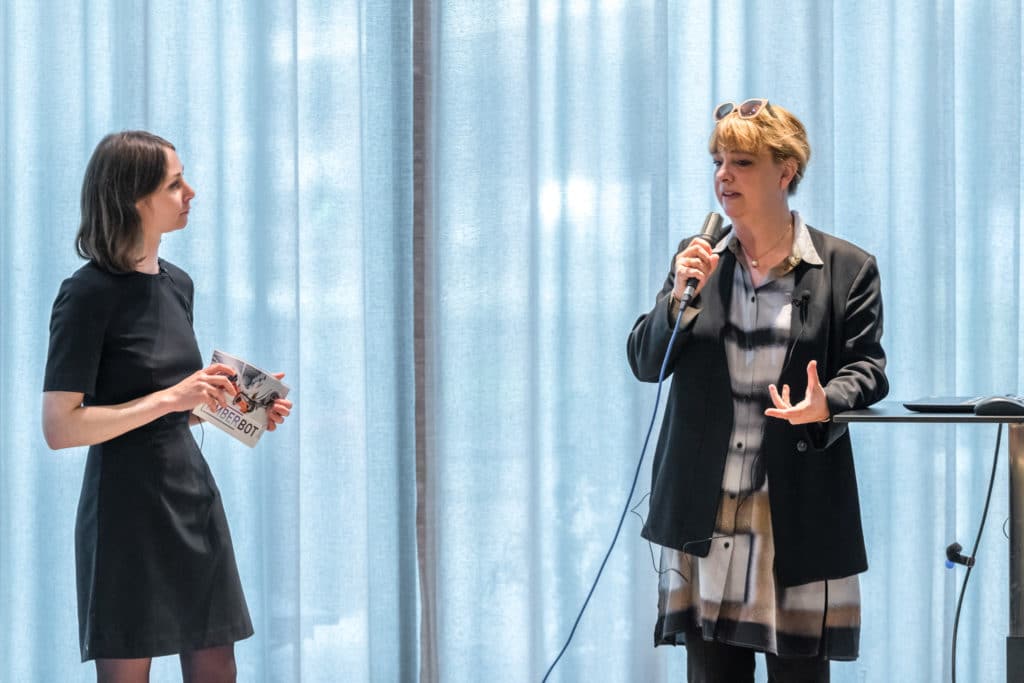
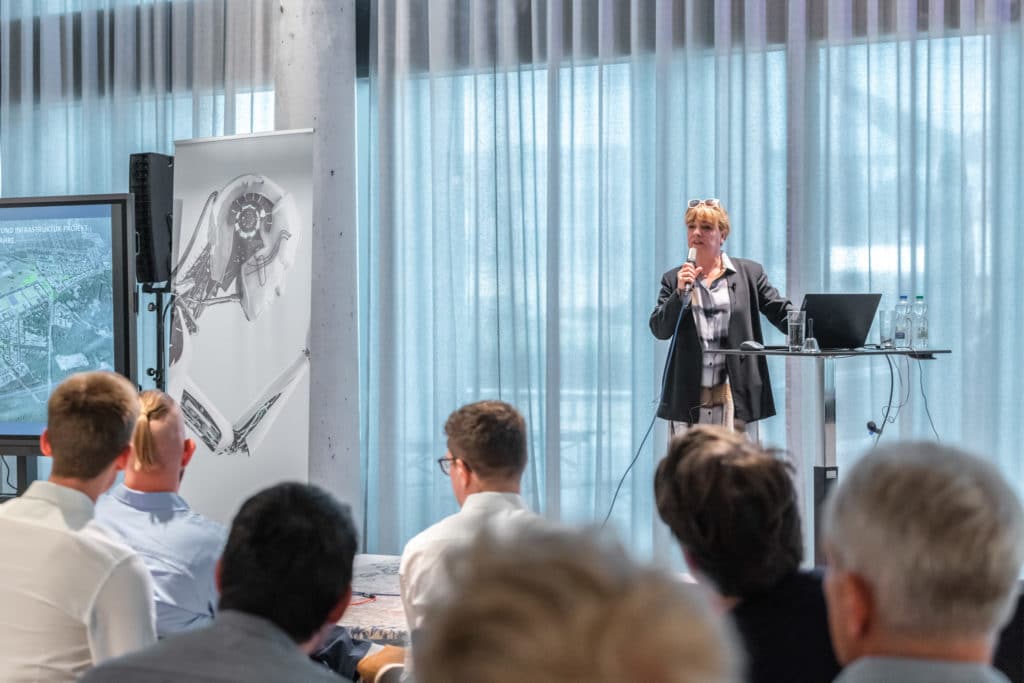

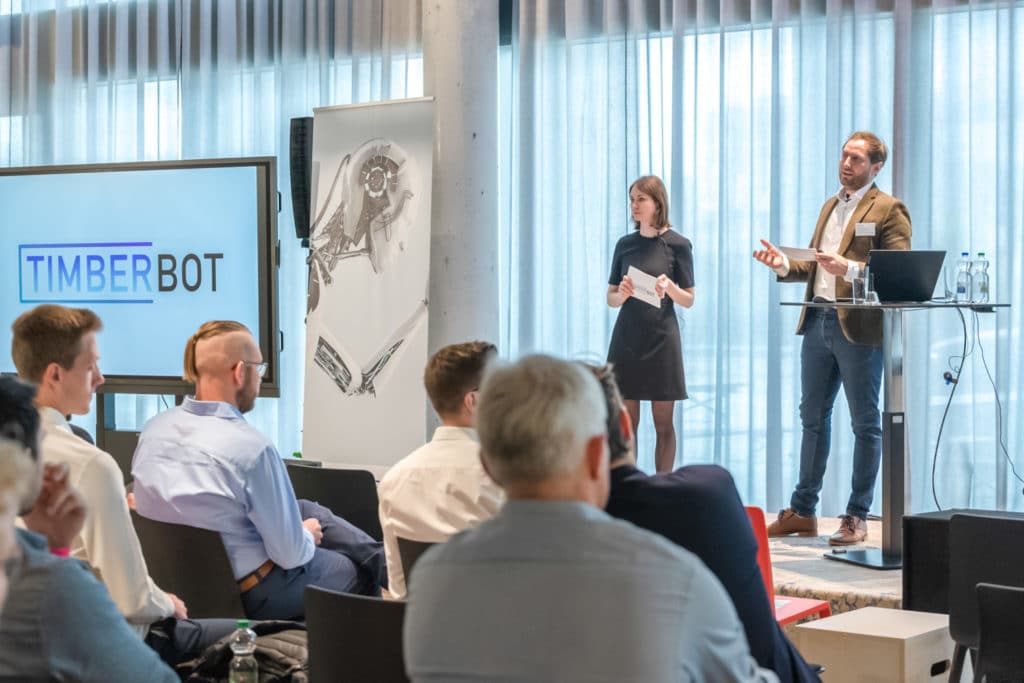
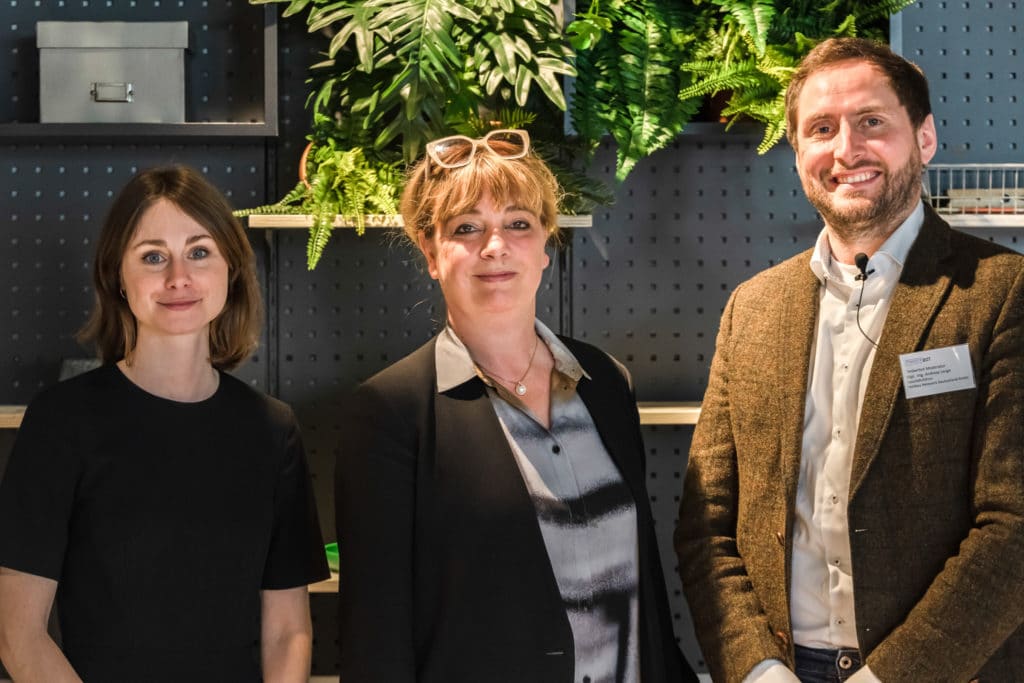

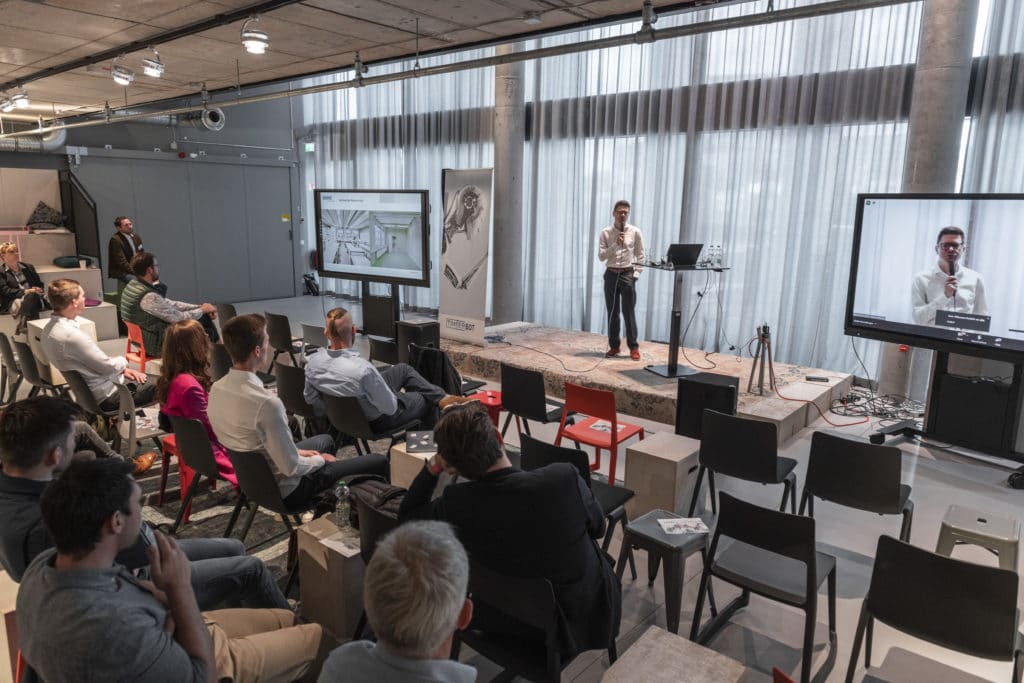
Here are some impressions from the TimberBot in Berlin.
Berlin is to become a timber construction competence centre by 2030 and we want to promote this development. In addition to attracting the timber industry, 5,000 flats in timber construction are to be built at the old Tegel Airport in the Schumacherquartier. TimberBot is to become the leading trade fair for robotics and automation in the wood-based materials industry.
To this end, we have recruited 8 experts from research and development as well as from the private sector as speakers for this hybrid event. Our speakers from Austria, Switzerland, Germany, Canada and the USA will present knowledge and best practices.
Next TimberBot Event on 14.10.2022

Building 2030
Scenario 1: Timber construction gains in importance
"However, the limited regional supply of the raw material also shows where the limits of this construction method lie and underlines that raw material production and demands must be considered holistically."
Excerpt from: Scenario process "Building 2030
Brief report: Future scenarios for planning, building, operating and dismantling in 2030, Fraunhofer IAO 2022


By loading the video, you accept YouTube's privacy policy.
Learn more
Markus Derix on the "Prospects for timber construction
The sustainability of wood as a building material explained in clear terms.
- 30 million solid cubic metres of wood grow back every year in Germany alone.
- 2,100 m3 of wood for an office building in Amsterdam grow back in Europe in less than 15 minutes.
Our wood grows back - and where does concrete grow?
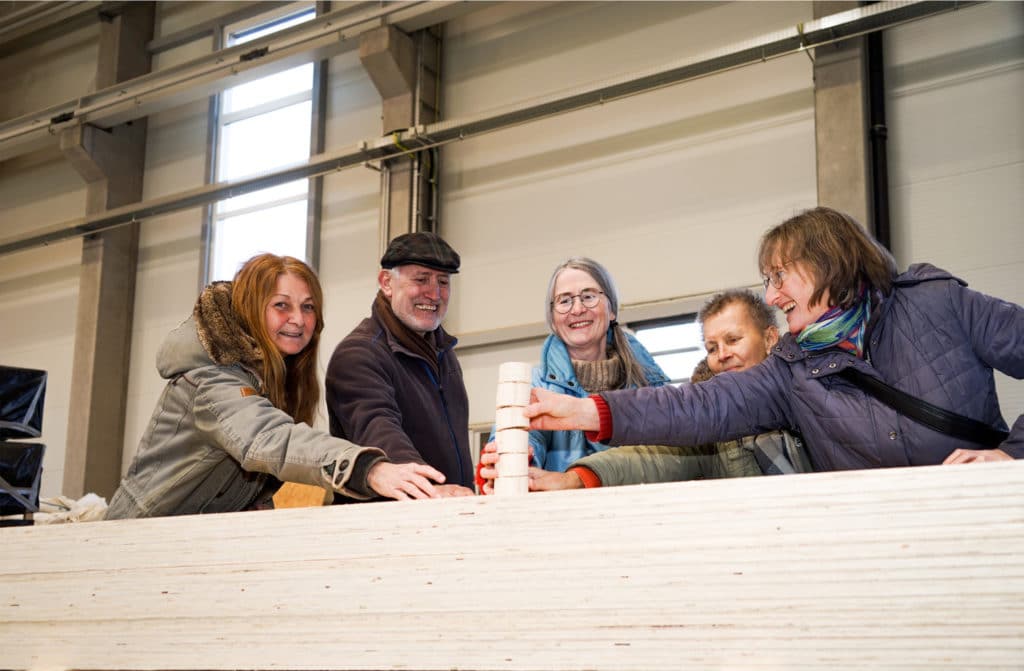
Join in: Donate heat for the needy now
Leidorf Holztechnik donates wood briquettes to Upper Austrian food banks
Everything is becoming more expensive: electricity, food and even heating. Pellets have just reached an all-time high of around €350 per tonne. For people on low incomes in particular, the burden is becoming greater and greater. The company Leidorf Holztechnik from Altheim / Geinberg would like to set an example for more humanity. The company wants to support those who are hit hardest - with free wood briquettes, which are distributed at the Upper Austrian food banks and also at partner food banks in many regions of Austria.
Fundraising campaign launched for the needy
Leidorf has set up a donation page so that even more heat can be donated. At www.Leidorf.com/spenden you can support the action. With a donation of 25€, a family can heat for 1 week. You can also contribute 100 € for heat for one month or 600 € for a whole winter. Donations can be made by bank transfer, PayPal or credit card. Especially interesting for companies: The donation to the OÖ Tafeln is deductible as a special expense in the tax return.
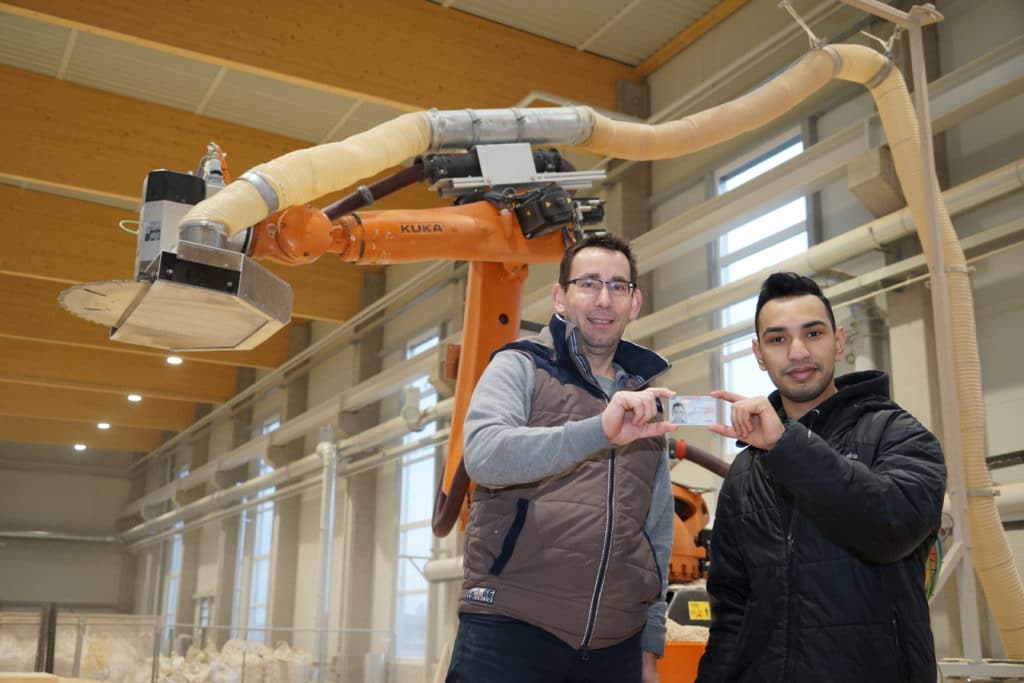
Leidorf Holztechnik successfully combats the shortage of skilled labour
The shortage of skilled workers is now affecting all companies in Austria. Unfortunately, the Corona pandemic has further intensified this development. That's why the Leidorf company went all out for Simo, a Moroccan, to make employment possible.
GEINERBG. At the beginning of 2021, Leidorf received an application from a student. Simo, a young Moroccan, studied automation technology in his home country. After completing his bachelor's degree, he moved to Poland to complete a master's degree in Poznan. Simo found videos of a wood technology robot on the Internet, which is located in the Innviertel region at the Leidorf company. The robot CNC system fascinated the young man. He therefore sent an online application to Geinberg.
It quickly became clear: Simo is serious
Studies confirm: Wood emissions are not critical
In a 44-page brochure, the fnr has summarised "Living with wood - Influence of wood emissions on residential health". It provides information on the emissions of volatile organic compounds (VOC) caused by wood and wood products and summarises the latest scientific findings on this. It is based on 12 research projects that the Federal Ministry of Agriculture funded with a total of 3.6 million euros from 2015 to 2019.
No evidence of health risks
A research network under the leadership of the University Medical Centre Freiburg was responsible for the health assessment of emissions from wood and wood products in indoor spaces. Studies were carried out on the lungs, eyes, skin and nerves, among other things.
With the result: "that to date there is no convincing evidence of clinically relevant effects after exposure to indoor concentrations of wood emissions". A risk to humans from the release of emissions from wood and wood products into indoor air is not apparent.
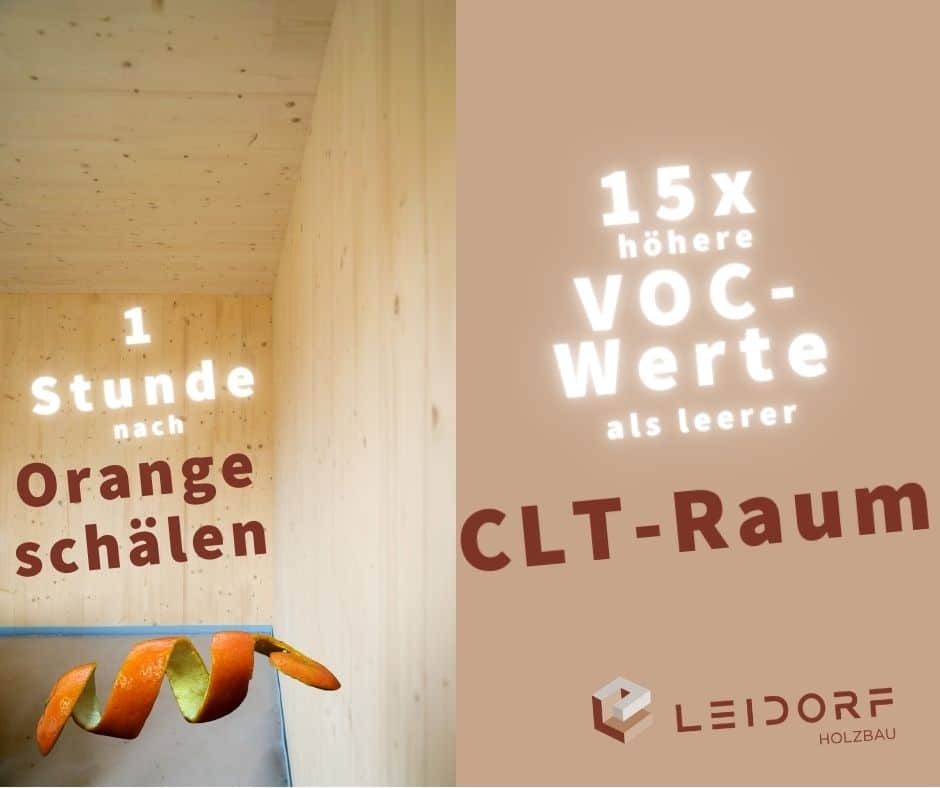

What influence do CLT walls have on the air quality of living spaces?
In a research project of Holzforschung Austria and Wood k-plus in Tulln, the indoor air quality of a CLT room was investigated.
To get a realistic picture, the CLT room was expanded step by step and subsequently also used.
The tests make it clear that the indoor air quality of the pure CLT construction is very good.
CLT - Space:
Very good indoor air quality
However, the use of the room has a significant influence on the measured VOC concentrations.
An example: When peeling an orange, the VOC emission briefly rises to 37.5 times that of the empty CLT room. After one hour, the VOC levels are still 15 times higher than the empty solid wood room.
Use influences indoor air quality
- Burning scented candles
- Cleaning with all-purpose cleaner
- Application of an electric air freshener
- Cigarette smoking
- Lighting an ethanol stove
- Carrying out a cooking process
- Application of cosmetics
- Peeling oranges
- Application of parquet care products or wood polish
Source: Wood K plus, Holzforschung Austria, IBO Innenraumanalytik OG, Techn. Büro für Chemie Dr. Karl Dobianer - VOC emissions from wood products and indoor air quality, Summary of the final project report 2012 - 2014, 2015
Investment despite Corona - New construction of the Wood Competence Centre in "Wood Valley

In 2015, Alexander Leidorf brought about a small revolution in timber construction by developing a state-of-the-art robot system for the CNC machining of XL wooden parts. The decision proved to be the right one - expansion is already the order of the day. Leidorf is investing 5 million euros in the construction of a new factory building at INKOBA's Altheim-Geinberg site. This will also create numerous new jobs that require high qualifications.
We offer these materials for the
Hybrid Construction & Kerto
BSH

other
Years of experience
...a team of specialists and unique machines make the Leidorf company your partner for any kind of woodworking. No challenge is too big for us - literally!
Because we are the only company to manufacture individual XL requests in 3 to 7-axis simultaneous CNC processes with a machining length of over 40 metres and a machining width of over 3.5 metres.
With this technology, free forms and undercuts can also be implemented.
.
In addition, we offer solutions for

Acoustic processing
Acoustic drilling, acoustic slotting

Prefabrication in the factory
Assembly of add-on parts, coatings, fire protection cladding,....

Logistics
Loading suitable for the construction site until delivery to the construction site

Trade with XL wooden panels
with and without joinery
A house made of CLT is built in only 6 days

By loading the video, you accept YouTube's privacy policy.
Learn more

